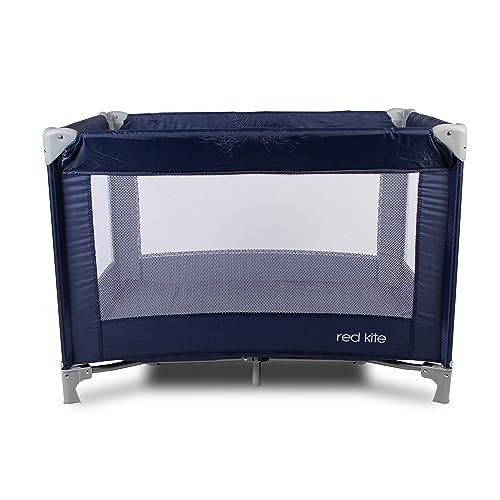5 Killer Quora Answers To Tots And Cots
페이지 정보
작성자 Tod Lapham 작성일25-08-03 08:08 조회4회 댓글0건관련링크
본문
Tots and Cots: A Comprehensive Guide for Parents
When it pertains to making sure a safe and comfy sleeping environment for children and toddlers, the options moms and dads make-- ranging from cribs to cots-- can substantially affect their well-being. Today's article dives deep into the complexities of selecting the best sleeping plans for tots and cots (mouse click the following internet site), stressing safety, design, functionality, and how these options progress as a child grows.

Comprehending Tots and Cots
Tots generally refer to young kids, especially young children aged between 1 to 3 years, while cots are the sleeping arrangements particularly designed for babies and toddlers. The appropriate sleeping devices for this age group includes various kinds of cots, cribs, and young child beds.
Kinds of Cots
Numerous designs exist to meet the diverse needs of both moms and dads and kids. Below is a list detailing the most typical types of cots readily available:
Standard Crib
- A conventional crib is designed for infants and normally includes sides that can be gotten used to different heights.
Convertible Crib
- This kind of crib can transform into a toddler bed, daybed, or full-sized bed as the child grows, making it a long-lasting financial investment.
Portable Crib
- Likewise understood as travel cots, these are lightweight and quickly collapsible, perfect for traveling or smaller home.
Co-Sleeper
- A co-sleeper crib connects to the side of the parents' bed, permitting for simple access while ensuring the baby has a different and safe sleeping area.
Toddler Bed
- A toddler bed is a small bed that looks like a basic bed however is created specifically for toddlers, typically including security rails.
Mini Crib
- Mini cribs are smaller than basic cribs, making them a great option for tight spaces, however they are suitable for babies just.
Safety Considerations
Guaranteeing safety is paramount when choosing a cot for a child. Here are vital safety standards parents should consider:
- Check for CPSC Certification: Ensure that the cot sticks to the Consumer Product Safety Commission (CPSC) standards.
- Prevent Drop-Sides: Cots with drop-sides have actually been linked to safety risks, and the current safety guidelines prohibit them.
- Utilize a Firm Mattress: A firm bed mattress minimizes the danger of suffocation and need to fit comfortably within the cot.
- Keep Bedding Simple: Use a fitted sheet and avoid pillows, comforters, and packed animals that can present suffocation risks.
- Follow Weight and Age Guidelines: Ensure the child has actually not exceeded the cot's weight limit and is still within the recommended age.
Transitioning from a Cot to a Toddler Bed
The transition from a cot to a toddler bed can be an emotional milestone for both moms and dads and children. Here are steps to ease the transition:
Timing
Deciding when to shift can be subjective, but it's generally advised to make the switch between 18 months and 3 years, based upon aspects like:
- Physical Ability: If the child is climbing up out of the cot.
- Potty Training: Consider transitioning if the kid is potty training and requires easier gain access to.
- Behavior: Exhibiting indications of maturity, such as following guidelines or expressing a desire for independence.
Tips for Making the Transition Smooth
Involve Your Child: Let the child pick their new bedding or bed decoration to instill enjoyment about the change.
Keep Routine Consistent: Maintain the kid's bedtime routine to provide comfort throughout this duration of change.
Discuss the Change: Discuss the shift to a young child bed positively, making it sound like a fantastic experience.
Security Measures: Place the bed against the wall or usage bed rails to prevent falling during sleep.
Picking the Right Bed
When picking a young child bed, parents need to think about aspects like:
- Height: Low-profile beds are perfect for toddlers who might fall out throughout sleep.
- Durability: Ensure the bed can stand up to active play in addition to sleep.
- Design and style: Choose a style that matches the child's room and is attracting the child.
Selecting the best cot for your kid can be a complicated process, but understanding the alternatives readily available, key safety factors to consider, and the ideal timing for transitioning to a young child bed can make this journey much easier for moms and dads. Investing time and effort into these choices will guarantee that your child has a safe, comfy, and nurturing sleep environment.
Frequently asked questions
1. What is the distinction between a cot and a crib?
- A cot is usually a smaller sized bed developed for more youthful toddlers, while a crib is a bigger bed that is usually appropriate for infants as much as 3 years old.
2. When should I move my child from a crib to a young child bed?
- The transition time is generally in between 18 months and 3 years; this modification is based on the kid's physical capabilities and behavioral indications.
3. How can I ensure my child is safe while sleeping?
- Always stick to security standards, utilize a company bed mattress with a simple bedding arrangement, and keep track of the cot's weight limit.
4. What should I do if my child attempts to climb out of the cot?
- If your kid is climbing up out, it might be time to think about transitioning to a toddler bed to avoid falls.
5. Can I utilize the very same bed mattress when transitioning?
- Generally, it is best to change the crib mattress with one that is specific to the toddler bed. Guarantee it fits comfortably and complies with safety standards.
By thinking about these elements, parents can design healthy sleep practices and offer their kids with a protected environment that promotes relaxing sleep. Purchasing quality sleeping plans will add to the child's total advancement and happiness.
댓글목록
등록된 댓글이 없습니다.

